One of the rarest cheetahs, the king cheetah, is only found in the southern region of Africa.
King cheetah cubs are just like regular cheetah cubs, with a tinge of added cuteness owing to their unique fur pattern. The king cheetah is known primarily for its unusual markings, and very few have been seen in the wild, with breeding in captivity keeping them from extinction.
In this article, we’ll explore ten fascinating facts about king cheetah cubs.
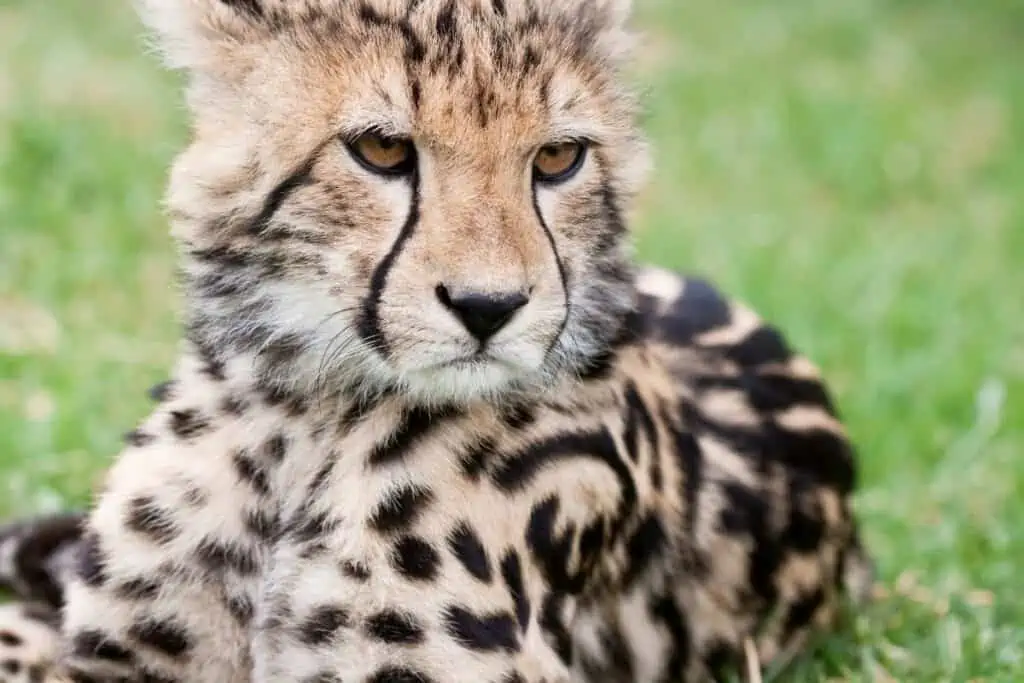
How is a king cheetah different?
Regular cheetahs and king cheetahs are similar in all aspects except fur patterns.
Contrary to popular belief, cheetahs and king cheetahs are not separate species. Previously it was also believed that they were a cross between a cheetah and a hyena due to their unique fur coat, but this is also not true.
Their coat is distinct. Instead of plain black dots, king cheetahs have splotches across their fur and stripes down their backs.
Facts About King Cheetah Cubs
King cheetah cubs are easily identifiable cheetahs with several exciting features and characteristics.
Here are some facts about these adorable big cat cubs:
1. One and the same
The king cheetah isn’t a different species. Instead, it’s the same as a regular cheetah, the only difference being that the former has a mutated fur pattern.
The king gene is a recessive allele, and scientists have identified it as the same one that turns a regular tabby into a blotched tabby.
When two cheetahs with the gene mate, king cheetah cubs are born.
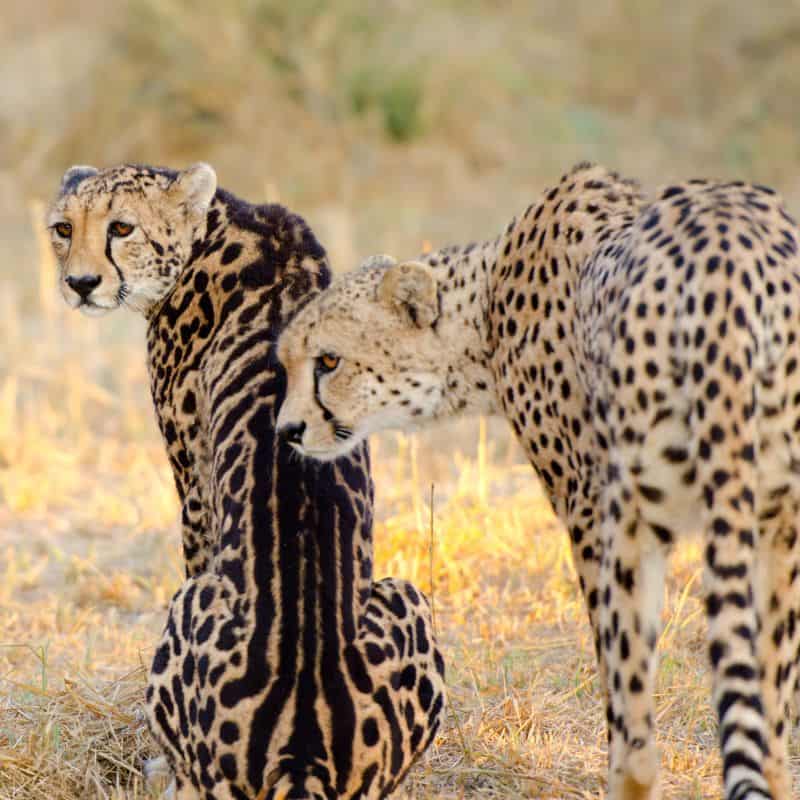
2. Blind at birth
At birth, cheetah cubs are completely blind. Their growth rate, however, is rapid, and within 4 to 10 days, their eyes open, and they begin crawling about their nest.
Considering their lack of sight in their initial days, cubs are incredibly vulnerable, requiring extensive attention from their mothers.
3. More than a pattern
Besides a unique pattern adorning their fur, the king cheetah’s fur is also different because it tends to be thicker and darker.
This difference is not exactly advantageous as regular cheetahs have thin hair, which bears better in the hot African climate.
King cheetah cubs are born with dark fur with all the spots they’ll ever have. However, these tend to blend, indistinguishable from just a simple dark coat.
In the initial weeks after birth, all cheetah cubs grow a thick coat reminiscent of a honey badger meant to serve as camouflage.
4. Rarity
King cheetahs are extremely rare, with only six sightings ever reported in the wild.
Cubs are even rarer to spot, seeing as they rarely survive in the wild – a reason owing to them quickly nearing extinction status.
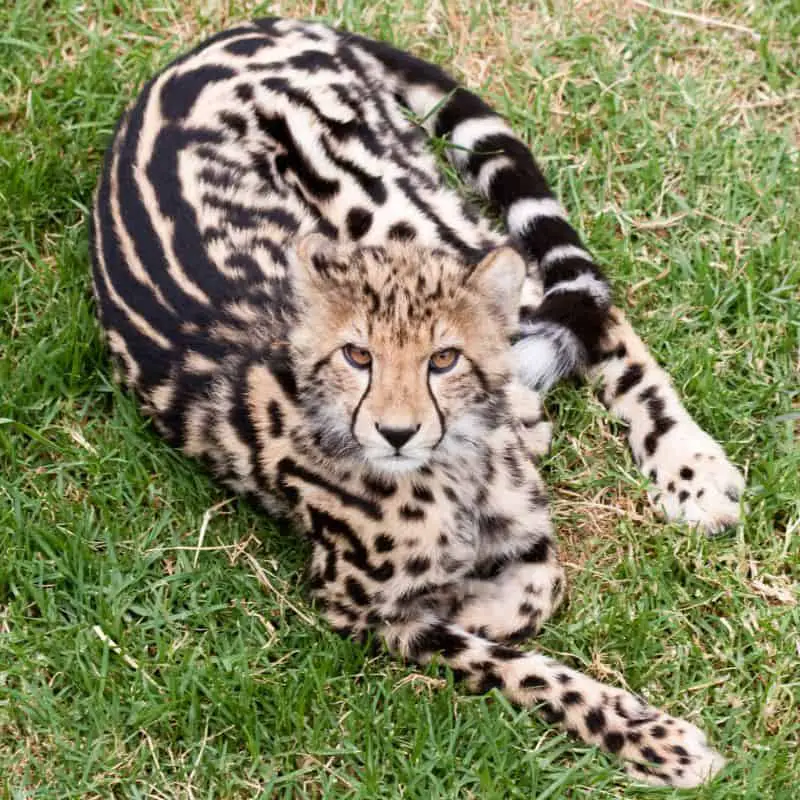
5. From cub to cheetah
Cheetah cubs have an incredibly fast growth rate, with them reaching nearly half their adult size at the age of 6 months.
They lose their milk teeth by the age of 8 months and begin their first attempts at hunting.
6. Slim survival chances
Cheetah cubs, in general, have meager survival rates in the wild. This is one of the reasons cheetahs are nearing extinction.
Cubs surviving to adulthood is extremely rare, with their chances standing at 5% only. Mother cheetahs hunt alone, leaving their cubs vulnerable and susceptible to attack by other predators.
Cubs also have a weak immune system. This is a direct result of low genetic diversity. This is worse in the case of king cubs since they have an even lower genetic diversity owing to both parents having to have the recessive allele responsible for their fur pattern.
This becomes cyclic, as dying cubs result in even lower genetic diversity, which results in even weaker immune systems, which then cause higher cub mortality rates, and so the cycle continues.
7. Breeding in Captivity
King cheetahs are a marvel to look at owing to their distinctive coat. This is why breeding them in captivity is an often sought-after pursuit since this would ensure the preservation of a rare recessive gene.
But breeding in captivity requires immense effort and is indeed a difficult task. Finding a pair that both possess the gene needed to produce king cubs and then getting to mate is not an easy ordeal seeing as they tend not to breed in front of humans.
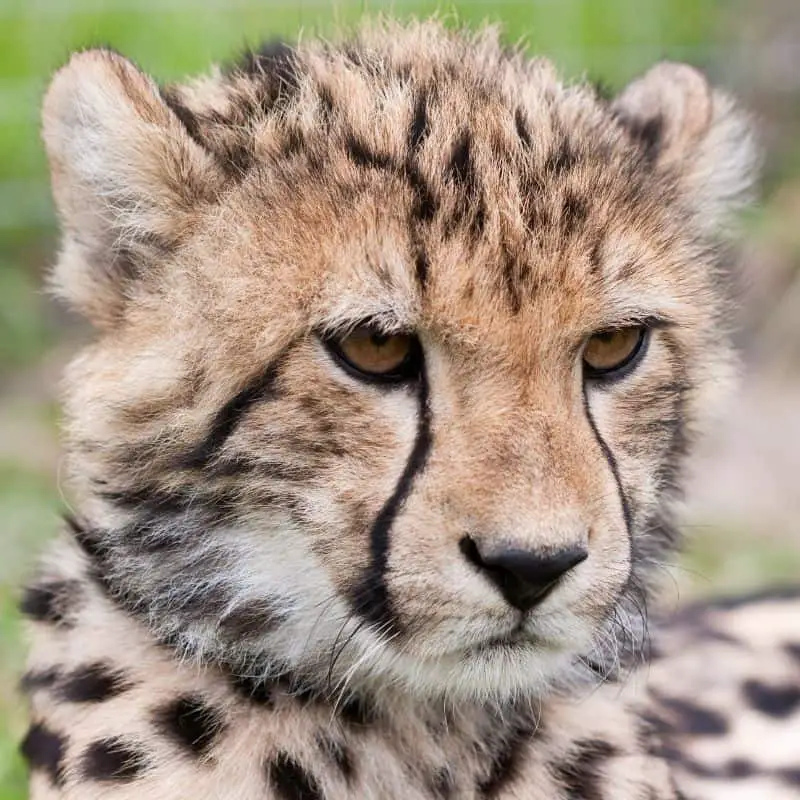
Astonishingly, the largest cheetah litter ever birthed was eight cubs in a conservation center in Connecticut. The mother was a King cheetah, appropriately named Mona Lisa.
One of the cubs was named Adaeze, meaning “daughter of a king”, while another, following a media contest, was named “Machozi!” which is Swahili for “tears”. Another appropriate name for the iconic tear marks on the cheetah face.
8. Camouflage
King cubs are better equipped for camouflage because, even though kings and regular cheetahs grow a mantle when they’re young, king cubs have the added advantage of having darker fur populated with not only spots but also dark stripes.
The thick mantle cheetah cubs grow when they’re younger help them appear more like honey badgers, an astonishing animal that, even though it has a relatively small body, is one of the most fearless animals in Africa, unafraid to take on even lions.
This leaves these tiny ferocious animals with few natural predators.
9. Social animals
Cheetahs are social and can be found in groups which usually consist of a mother and her cubs.
The social aspect of king cheetah cubs is exhibited in their playful nature, which they use to learn and hone their hunting skills. They do so by play fighting with their siblings, climbing trees, and general roughhousing.
Cheetah cubs and their mother often chirp and yelp to communicate.
Because cheetahs tend to be anxious, king cubs in captivity are often paired with puppies, so the former has playmates to bond and socialize with to calm their anxiety and lower their stress levels.
10. Speed
Despite being so young, king cubs still stay true to their cheetah nature, exhibiting speeds of up to 50 miles per hour at just six months.
After just one year, they reach their speed peaks and become expert hunters.
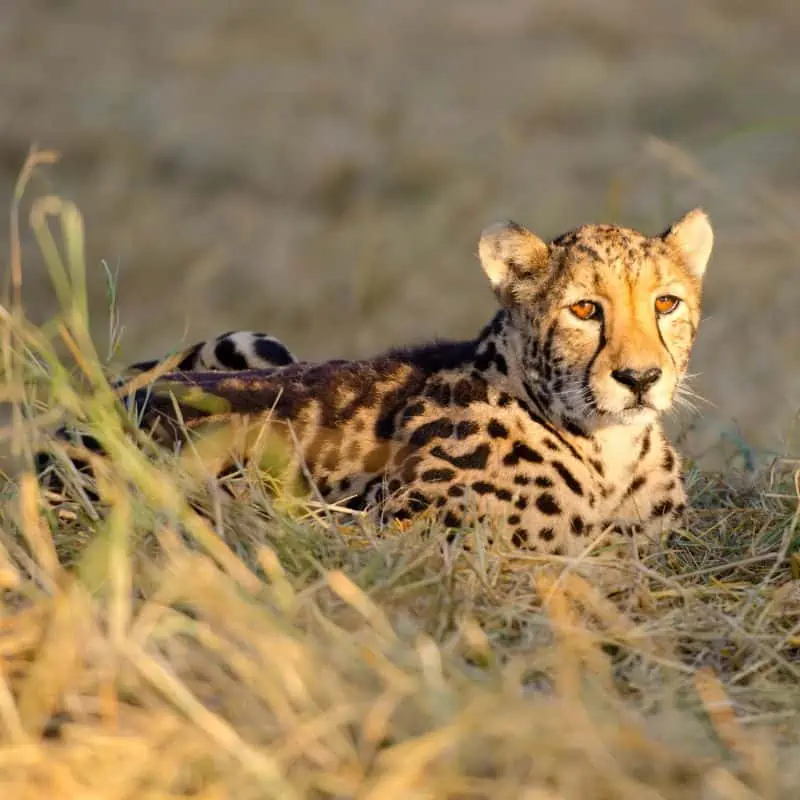
Final thoughts on King Cheetah cubs
King cheetah cubs are rare cheetah cubs known for their distinct fur pattern. They’re interesting animals that, unfortunately, struggle to survive into adulthood in the wild.
They’re difficult to breed in captivity and a rare sight both in the wild and in captivity.
Their birth in the wild or otherwise is a difficult feat only accomplished with two cheetahs possessing the rare recessive gene needed to produce king cheetah cubs.
Cheetahs are endangered, listed as a vulnerable species, and King cheetahs are extremely rare, with only a handful believed to exist in the wild today.

